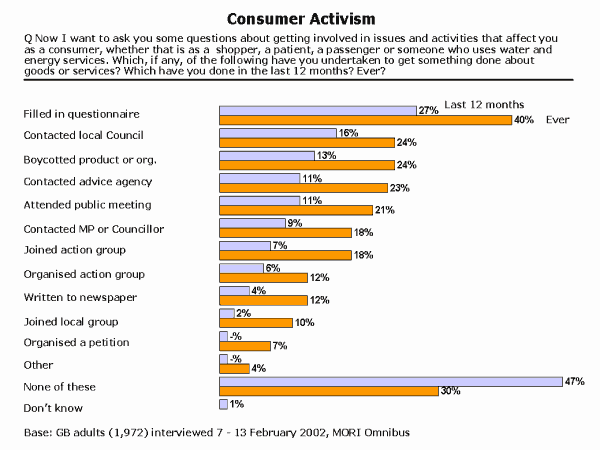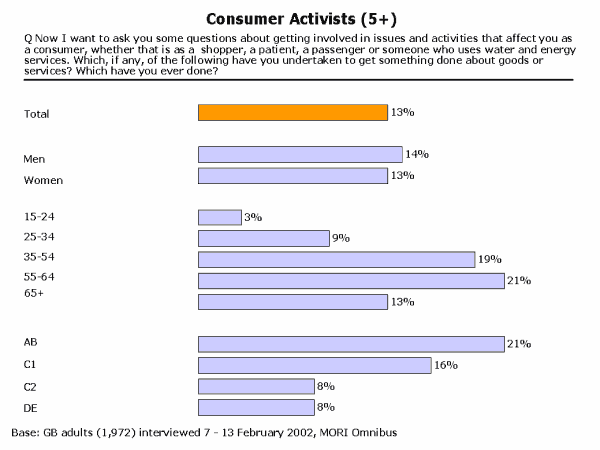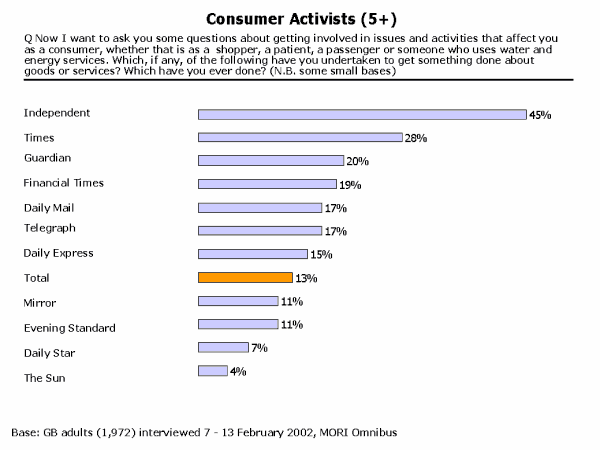Consuming Passions
For many years I've been an interested observer of people power. Who are the 'movers and shakers' of British Society? What is their profile, how do they influence others, and what do they read. My first exposition of this interest was in 1972, when the long lamented magazine New Society printed an early article of mine, "The Hidden Activist", which examined what I termed the socio-political activists (S-PAs) in Britain who I defined as that c. 10% of the public who tended by their actions to stand out from the crowd, to be elected officers of clubs or groups, make speeches and write letters to editors, stand for public office and otherwise take part in an active way in order to influence the course of British political events.
Since then I have examined these S-PAs in articles and books, and a decade ago (with Eric Jacobs) wrote Typically British (Bloomsbury 1991), identifying the profiles of typologies of all sorts of the British: 'Green Activists', 'Leisurists', 'Culturalists', 'Placids' (40% of the population!), and 'Socialisers', among others. At MORI, we've long since sought to identify the views of 'movers and shakers', of tastemakers and influencers such as 'trade union activists' and local activists, in local government studies.
Recently I was asked by the National Consumer Council to present the results of a series of studies on Consumer Involvement and Representation (focus groups), Attitudes to Consumer Representation (workshop) and Consumer Activism (omnibus survey). The latter involved establishing a profile of Consumer Activists, and found that no fewer than 69% of the British public have been active in some way as a consumer in the past beyond the activity of buying goods and services. This involved filling in questionnaires about a particular product or service, contacting the local council's trading standards office or environmental health office, boycotting products or organisations, etc. We further identified that 38% of the public have been active in the last 12 months and before, 17% not in the past 12 months, but had been before, and 14% have been active in the past 12 months but not before.

The most active we identified as those who had ever done five or more of the 11 activities we selected as representing consumer activism, ranging from the fairly passive (filling in a questionnaire about products or services) to the rather infrequent (actually having organised an action group (for example, to protest against a new building or the closure of a local post office/hospital/library/school -- for better bus services, parking facilities, crossings near schools)).

One striking finding is how few in the working class, half the British adult population and two thirds as recently as 1979, take an active role in consumerism. Over half of DEs, 54%, say they have never been involved in any of these activities, compared with a third, 35%, of ABs. Still, the much derided Citizens' Charters have empowered them to take a more active role, by letting them know they have the right to question those in power and authority, the policeman, the doctor at the hospital, the local council official.
The skew of consumer activism extends to the readership of national daily (and Sunday) newspapers: readers of the broadsheets tend to be more likely to have taken consumer action. While four times as many people read the Sun than read the Times, Times readers are seven times as likely to have done five or more of the activities we defined as consumer actions.

For the public relations professional, it is important to think in terms of opinion formers, and in my experience too few do. The usual concept is 'FT readers', or 'AB men' (sic), or the frequently mentioned 'opinion leaders', fuzzy at best, and dangerous at its worst. Each product, service or activity has its own typology of those who are the thought leaders in their group, whether it is users of a particular product or service, members of a charity or other NGO, or within a workforce. Seeking to identify these activists should be a part of the planning of any public relations campaign.
This article was first published in Profile on 27 October 2002
Sir Robert Worcester is chairman of MORI



